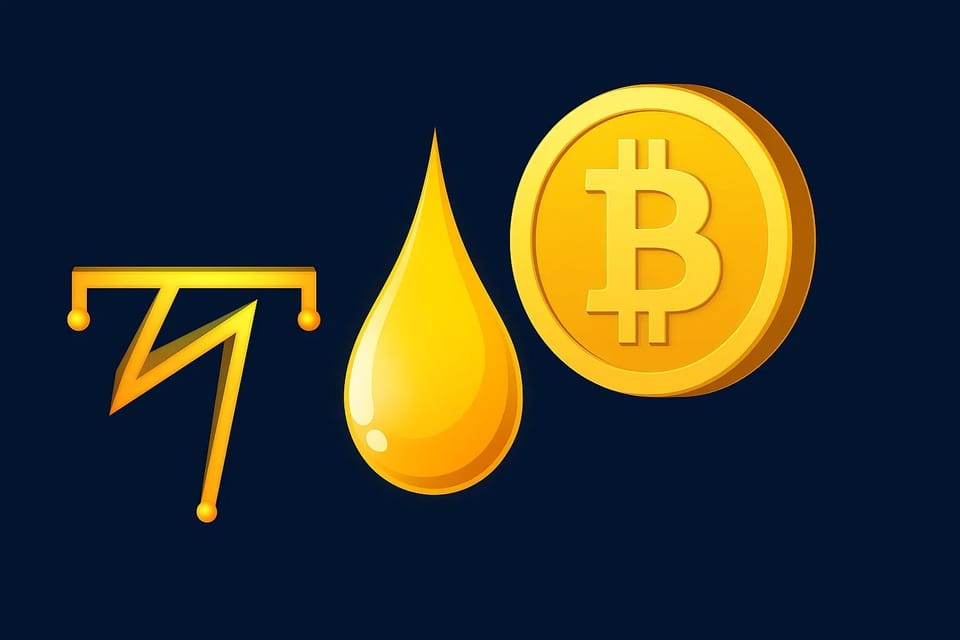TyronDAO and Syron: Access Liquidity Without Selling Your BTC

In an ecosystem where Bitcoin (BTC) is consolidating as a store of value, a key need arises for holders: accessing liquidity without selling their BTC.
TyronDAO addresses this need with the development of Syron, a decentralized protocol that allows users to use BTC as collateral to mint native stablecoins on Bitcoin’s mainnet, such as SYRON (BRC-20) and RUNE•DOLLAR (Runes).
What does it mean to use BTC as collateral?
When users need liquidity, they can deposit BTC into the Syron protocol as collateral—an asset of value provided as a guarantee to obtain a loan in stablecoins (like SUSD). The stablecoins minted from this process are known as collateralized assets, since their issuance is backed by the locked BTC.
What’s unique here is that everything is done in a decentralized, self-custodial, and Bitcoin-native way, using standards like BRC-20 and Runes, with no bridges or intermediaries involved.
⚖️ Collateralization: The Balance Between Security and Liquidity
Syron uses a collateralization model designed to ensure system solvency and protect users against Bitcoin’s price volatility. This model relies on two core metrics:
Collateralization Ratio
This represents the relationship between the value of the BTC collateral and the amount of stablecoin debt issued. For example, if you deposit $150,000 in BTC and mint $100,000 in SUSD, your collateralization ratio is 150%.
- Minimum required ratio in Syron: 150%
This means the BTC must be worth at least 1.5x the amount of stablecoins minted. - Liquidation threshold: 120%
If the ratio drops below 120% due to a BTC price decrease, the protocol triggers a liquidation to maintain solvency.
📐 Loan-to-Value (LTV) Ratio
This is the inverse of the collateralization ratio and shows what percentage of the collateral's value has been borrowed.
Using the same example:
- If you deposit $150,000 in BTC and borrow $100,000 in SUSD, your LTV is 66.7%.
- The higher the LTV, the greater the liquidation risk.
| BTC Collateral | Debt (SUSD) | Collateralization Ratio | LTV Ratio | Position Status |
|---|---|---|---|---|
| $150,000 | $100,000 | 150% | 66.7% | ✅ Safe Position |
| $130,000 | $100,000 | 130% | 76.9% | |
| $120,000 | $100,000 | 120% | 83.3% | ❌ Imminent Liquidation |
Both indicators give users clear tools to manage risk, make informed decisions, and maintain healthy positions.
📈 What Happens When BTC Price Changes?
- BTC appreciates: If the BTC price increases, the collateralization ratio improves automatically, reducing liquidation risk.
- BTC depreciates: If BTC drops in value, the ratio falls, and if it crosses the liquidation threshold, the protocol will sell the collateral to cover the debt.
These mechanisms are fully automated and transparently executed on-chain.
✅ Syron: Bitcoin-Native Decentralized Finance
TyronDAO and its Syron protocol mark real progress in building DeFi directly on Bitcoin, offering a clear solution to a real-world need: accessing liquidity without losing BTC exposure.
Key advantages include:
- 🚀 Instant liquidity without selling BTC
- 🔐 Full self-custody of your collateral
- 📊 Clear risk metrics (LTV and collateralization ratio)
- 🧩 No bridges or intermediaries — 100% Bitcoin-native with BRC-20 and Runes
- 🗳️ Open DAO governance to adjust key parameters
- 🌐 On-chain transparency and automation
In short, Syron provides a secure, transparent, and Bitcoin-aligned way to access liquidity while staying fully on-chain.
